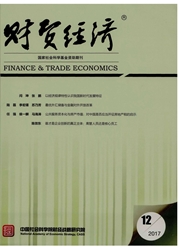

 中文摘要:
中文摘要:
小额信贷一直被联合国、世界银行等国际组织看作减缓贫困的有效工具。然而,以服务低收入人群、小微企业为宗旨的小额信贷机构近年来却出现了“嫌贫爱富”、“垒大户”等目标偏离问题,这对国际小额信贷的可持续发展形成了严峻钓挑战,找到小额信贷机构目标偏离的影响因素无疑是应对这一挑战的重要举措。为此,基于中外488家小额信贷机构的面板数据,本文建立固定效应模型进行了实证检验和比较分析,发现机构类型、风险水平以及经营年限是导致目标偏离的主要因素,其中,机构类型和风险水平对中国小额信贷机构目标偏离影响显著。最后,本文指出了上述结论对治理我国小额信贷机构目标偏离问题的政策启示。
 英文摘要:
英文摘要:
Microcredit (Mierofinance) has always been regarded as an effective tool of reducing poverty by the United Nations and World Bank, but in recent years the microfinance institutions (MFIs) with mission of servicing the poor and micro-small enterprises are facing with the problem of mission drift: despising the poor customers and loving the rich customers, and others, which forms a serious challenge to the sustainable development of the international microfinance industry, so it is undoubtedly important to find out the factors leading to mission drift of MFIs. In the paper we empirically tests the factors impacting mission drift of MFIs and makes some comparisons based on a fixed effect model and panel data of 488 Chinese and foreign MFIs, and finds that the types, risk level and duration of MFIs are the main factors leading to mission drift, especially the former two are the significant factors leading to mission drift of the Chinese MFIs. Finally we point out some policy implication to manage the mission drift issues of MFIs in China.
 同期刊论文项目
同期刊论文项目
 同项目期刊论文
同项目期刊论文
 期刊信息
期刊信息
